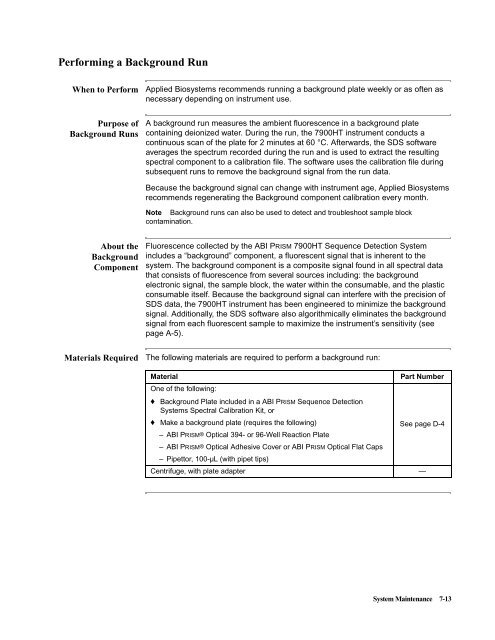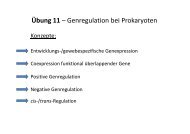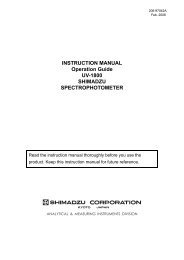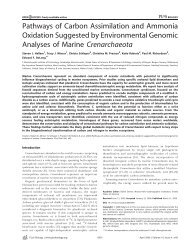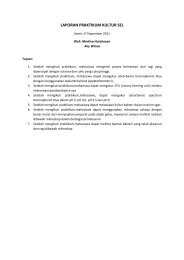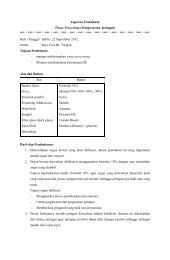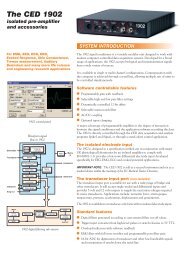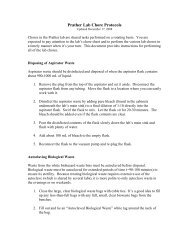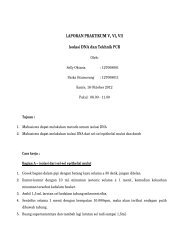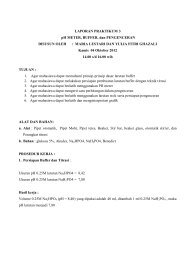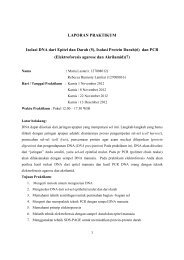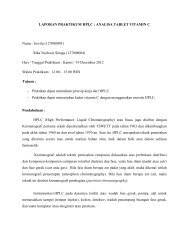ABI Prism® 7900HT Sequence Detection System ... - OpenWetWare
ABI Prism® 7900HT Sequence Detection System ... - OpenWetWare
ABI Prism® 7900HT Sequence Detection System ... - OpenWetWare
You also want an ePaper? Increase the reach of your titles
YUMPU automatically turns print PDFs into web optimized ePapers that Google loves.
Performing a Background Run<br />
When to Perform Applied Biosystems recommends running a background plate weekly or as often as<br />
necessary depending on instrument use.<br />
Purpose of<br />
Background Runs<br />
About the<br />
Background<br />
Component<br />
A background run measures the ambient fluorescence in a background plate<br />
containing deionized water. During the run, the <strong>7900HT</strong> instrument conducts a<br />
continuous scan of the plate for 2 minutes at 60 °C. Afterwards, the SDS software<br />
averages the spectrum recorded during the run and is used to extract the resulting<br />
spectral component to a calibration file. The software uses the calibration file during<br />
subsequent runs to remove the background signal from the run data.<br />
Because the background signal can change with instrument age, Applied Biosystems<br />
recommends regenerating the Background component calibration every month.<br />
Note Background runs can also be used to detect and troubleshoot sample block<br />
contamination.<br />
Fluorescence collected by the <strong>ABI</strong> PRISM <strong>7900HT</strong> <strong>Sequence</strong> <strong>Detection</strong> <strong>System</strong><br />
includes a “background” component, a fluorescent signal that is inherent to the<br />
system. The background component is a composite signal found in all spectral data<br />
that consists of fluorescence from several sources including: the background<br />
electronic signal, the sample block, the water within the consumable, and the plastic<br />
consumable itself. Because the background signal can interfere with the precision of<br />
SDS data, the <strong>7900HT</strong> instrument has been engineered to minimize the background<br />
signal. Additionally, the SDS software also algorithmically eliminates the background<br />
signal from each fluorescent sample to maximize the instrument’s sensitivity (see<br />
page A-5).<br />
Materials Required The following materials are required to perform a background run:<br />
Material Part Number<br />
One of the following:<br />
♦ Background Plate included in a <strong>ABI</strong> PRISM <strong>Sequence</strong> <strong>Detection</strong><br />
<strong>System</strong>s Spectral Calibration Kit, or<br />
♦ Make a background plate (requires the following)<br />
See page D-4<br />
– <strong>ABI</strong> PRISM® Optical 394- or 96-Well Reaction Plate<br />
– <strong>ABI</strong> PRISM® Optical Adhesive Cover or <strong>ABI</strong> PRISM Optical Flat Caps<br />
– Pipettor, 100-µL (with pipet tips)<br />
Centrifuge, with plate adapter —<br />
<strong>System</strong> Maintenance 7-13


